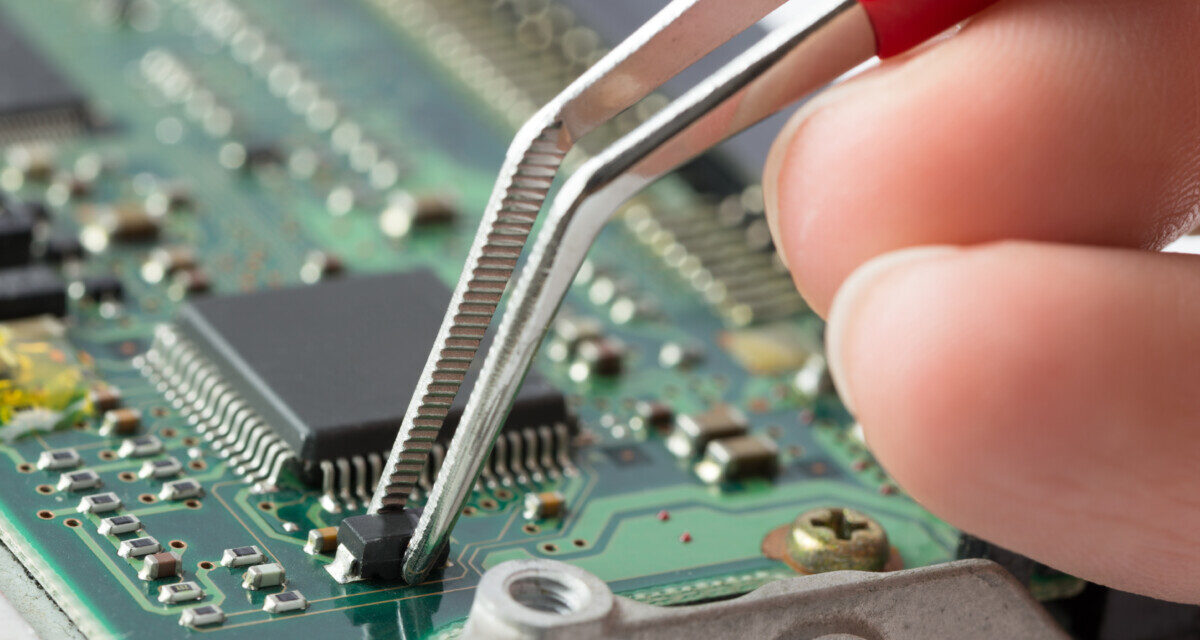Circumventing EMS Challenges with Cloud-Based Manufacturing

By Joey Rodriguez, Vice President of Product, MacroFab

Joey Rodriguez
The supply chain disruptions of recent years have revolutionized the electronics manufacturing industry. Industry leaders, especially those using a just-in-time (JiT) production system, found themselves rethinking their manufacturing processes. One late 2020 study revealed that 75 percent1 of supply chain and logistics professionals credit the pandemic for the changes to their supply chain process – a figure that has surely grown.
Given the current environment, designers and manufacturers of electronics products are wise to give new consideration to lead time and take proactive steps to mitigate some of the risk associated with traditional electronics manufacturing services (EMS). Digital platforms have emerged on the supply chain scene in recent years and the general consensus is that they are here to stay. The connectivity and computing offered by cloud based technology offer an unmatched level of insight and visibility – both critical components in the formation of a resilient product supply chain.
The Global Electronics Manufacturing Services market is expected to grow by $118.49 billion during the forecast period of 2020-2024, and by 2023 software used by manufacturers will be almost half cloud-based2. This comes as the electronics industry rapidly shifts towards digital-first manufacturing, aiming to modernize a fragmented and time-consuming process by connecting design tools directly to select networks of manufacturers.
There is a long road to recovery following the global supply chain crisis that must be met with nuanced ideas in design and manufacturing. The rise of cloud-based manufacturing platforms, the fall of JiT production systems, and the host of possibilities that accompany efficient scalability bookmark a new era in the electronics manufacturing industry.
Barriers to Accelerating Production
While the electronics industry is known for producing very high-tech products, the process of getting a newly designed printed circuit board manufactured has remained stubbornly low-tech. Old-school communication methods, incompatible tools and data formats, and a lack of up-to-date supply chain information slow the process and lead to costly rework for both design engineers and their manufacturers.
According to a 2021 electronic devices market report3, the design and manufacturing of electronic products have been highly impacted by the global disruptions of the past two years. A survey4 published in mid-2021 found that 92 percent of the global electronics manufacturers and suppliers surveyed are concerned about the impacts COVID-19 will have on their business. Significant supply chain constraints around getting material in time to do JiT manufacturing are one of the biggest barriers to accelerating the production timeline.
The JiT model, an inventory management method in which goods are received from suppliers only as they are needed, has shown its weakness in recent years. Inconsistencies in marketplace availability have prompted wise designers to develop a robust list of alternates as a proactive measure in the production process. The development lifecycle of a prototype has always carried the risk of unexpected changes, but current challenges in the industry amplify this possibility and reinforce the need for digital-first manufacturing.
Cloud Manufacturing in Action
The adoption of tools that connect design, manufacturing, and supply chain data and professionals will modernize and accelerate the prototype manufacturing process.
Simplifying data exchange, tracking project progress in real-time, and implementing rapid quoting in the ordering process are must-haves in rising to meet the evolving needs of the industry. Adapting to global market conditions is essential to the success and development of a resilient supply chain and organizations that are careful in their selection of cloud manufacturing tools will reap benefits for years to come.
Up-to-the-minute supply chain and manufacturing data and BOM (Bill of Materials) reviews that allow a view of real-time pricing and availability of chosen components should be a standard addition to the design and production tools in the wheelhouse of every EMS provider.
Organizations wishing to put cloud manufacturing in action should also look for a professional PCB (printed circuit board) assembler that implements routine quality-control measures to evaluate incoming materials. This includes running automated design for manufacturing (DFM) tests as another reinforcement to identify errors in the early stages of design and decrease the chances of delays in production.
The principles of digital-first manufacturing lay a solid foundation for current and future EMS providers to exercise their dexterity in the modernization of the supply chain and test the limits of connectivity through the development of new software-driven approaches.
The Future of Electronics Manufacturing
As the global supply chain evolves and novel technology such as MacroFab and Altium’s Altimade emerges, the growth of the electronics manufacturing industry is bound to continue on an upwards trend. With the right tools in hand, EMS providers have a chance to accelerate production, level the playing field (in terms of resources), and use that technology to improve best practices. Strategic sourcing, inventory management, factory elasticity, cost control, reshoring, time to market, and overall supply chain resilience are challenges that continue to garner the attention of the C-suite and will serve as the focal points of future innovation in the electronics industry.
Manufacturing companies are tasked with a monumental endeavor in ensuring customer satisfaction by consistently delivering product through a robust supply chain that can adapt to changing customer and market demands. By taking a thoughtful approach to scalability and elasticity organizations stand to gain improved supply chain performance and resilience for years to come.
Author: Joey Rodriguez is Vice President of Product, MacroFab, a growing digital electronics manufacturer. His experience spans venture capital, software tech, and hardware engineering across multiple industries and verticals.
Company Website: www.macrofab.com
2 https://mantec.org/how-the-manufacturing-industry-uses-cloud-tech/
3 https://www.thebusinessresearchcompany.com/report/electronic-products-market












